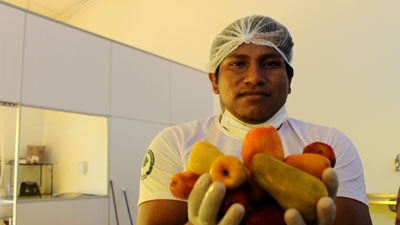The day has barely started in Carolina city (MA) and Jaylton Hycroh, age 23, is already working hard. One by one, he brings boxes and more boxes of cashew to a table where he and four colleagues will separate the good fruit from the bad. Later, the cashew fruits will be processed into frozen pulp.
“I like this job because in addition to preserving the Cerrado's fruit it provides a source of income for those who live in indigenous villages,” he says. Nowadays 20% of the raw materials processed at Fruta Sã —where the young Krikati works—comes from the tribes.
This percentage could be even greater (up to 50% says Geert Haveman, the factory manager), but the communities are not always able to harvest and transport the fruits safely. For instance, “The Krikati often refrain from sending us the acai berries they harvest in the village because they don't have a freezer,” states Hycroh.
Fear of delinquency
Approximately 1500km to the south, in Montes Claros (MG), several traditional communities obtain their livelihood by processing sugarcane, manioc and 18 types of fruit from the Cerrado.
There the challenges are different, albeit equally substantial, as we hear from Braulino dos Santos, coordinator of the Alternative Agriculture Center from the North of Minas Gerais. “In order to sell their products, these communities have to abide by the same standards imposed on industrialized products, but even so they get paid less.”
“Since traditional communities are not prepared to access public policies, rural producer associations end up defaulting on their debts quite frequently,” he adds.
Despite being very different, the stories of Jailton Hycroh and Braulino Santos summarize the daily lives of those who generate jobs and income by using the Cerrado in a sustainable way. Nevertheless, they put their stakes on a better scenario for the local communities.
Customized funding opportunities
The World Bank and CIF have joined efforts to finance preservation activities in the biome for the first time. Investments will total USD 6.5 million (close to R$ 14 million), of which nearly 70% will go directly to the hands of indigenous peoples and traditional communities.

